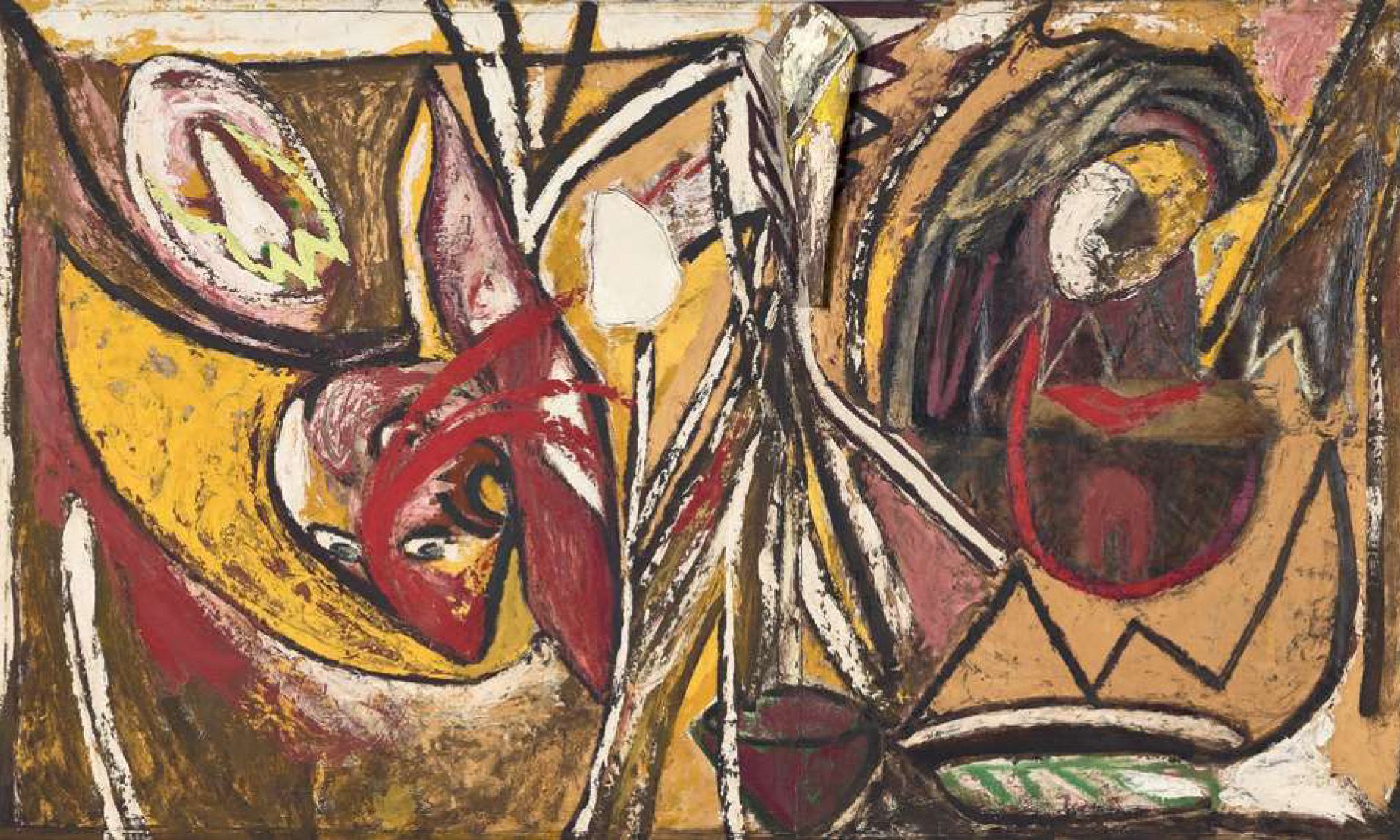Mimmo Paladino's Lo Spirito della Foresta, 1981 has been given an estimate of £18,000-£36,000
Courtesy of Germann
A Swiss auction house will next month offer works for sale that have been authenticated by artificial intelligence (AI).
Three works from the collection of the late curator Martin Kunz—by Louise Bourgeois, Marianne von Werefkin and Mimmo Paladino—will go under the hammer at Germann auction house in Zürich accompanied by AI authenticity certificates issued by the Swiss company Art Recognition.
Art Recognition’s chief executive, Carina Popovici, tells The Art Newspaper: "This could mark a significant shift in the art market, as until now professionals used to say that art can only sell if it has been authenticated by human connoisseurs. In other words, we are on the verge of an event where AI could have a major impact on real market transactions."
Fabio Sidler, a representative at Germann auction house, says: “We are all strongly committed to this new technology, including our in-house specialists. We are sure that the overall reaction will be very positive. We are convinced that this additional form of authentication will be an important element for more credibility in the market in general.”
A UK collector who preferred to remain anonymous says: “This is a radical move that may require a real leap of faith.”
The 1945 Bourgeois work has been given an estimate of CHF 30,000-40,000 (£27,000-36,000)
An excerpt from Germann's printed catalogue. Courtesy of Germann
The AI certificate for the Bourgeois work, a 1945 drawing with an estimate of CHF 30,000-40,000 (£27,000-£36,000), says: “The Art Recognition AI System evaluates Untitled to be an authentic artwork by Louise Bourgeois.” The work by Mimmo Paladino, Lo Spirito della Foresta (1981) has a estimate of CHF 20,000-40,000 (£18,000-£36,000). The untitled watercolour by Marianne von Werefkin has an estimate of CHF 5,000-8,000 (£4,000-£7,000).
Art Recognition’s detailed AI process—which includes “training the algorithm” so that the AI captures features pertaining to the analysed artist—has been used to verify contested works such as an 1889 self-portrait by Vincent van Gogh at the National Museum in Norway.
“This dataset includes not only images of genuine works created by the artist but also negative examples, such as images of forgeries, imitations, and pieces from the artist’s workshop, followers, school, circle etc. By examining all these positive and negative examples, the AI develops the ability to distinguish between an original masterpiece for instance and a work created in the artist’s style by an apprentice or follower,” says Popovici.
Earlier this year Art Recognition used AI to research a painted portrait of a peasant woman, stating that the work is 82% likely to have been made by one of the greatest artists of the German Renaissance, Albrecht Dürer.
Earlier this month, Christie’s also embraced new technological developments by introducing blockchain-backed ownership tools. For its sale in New York on 2 October (An Eye Towards the Real: Photographs from the Collection of Ambassador Trevor Traina), each lot came with a digital certificate of ownership stored on the blockchain which was offered via the web3 wallet provider Kresus.
The collection of Kunz, which also includes works by artists such as Bruce Nauman and Lorna Simpson, will go under the hammer in the sale scheduled to take place 23 November. Kunz died in 2021; he was the director of the Kunstmuseum Luzern, New York Kunsthalle and the Museo Comunale d’Arte Moderna at Ascona in southern Switzerland.

